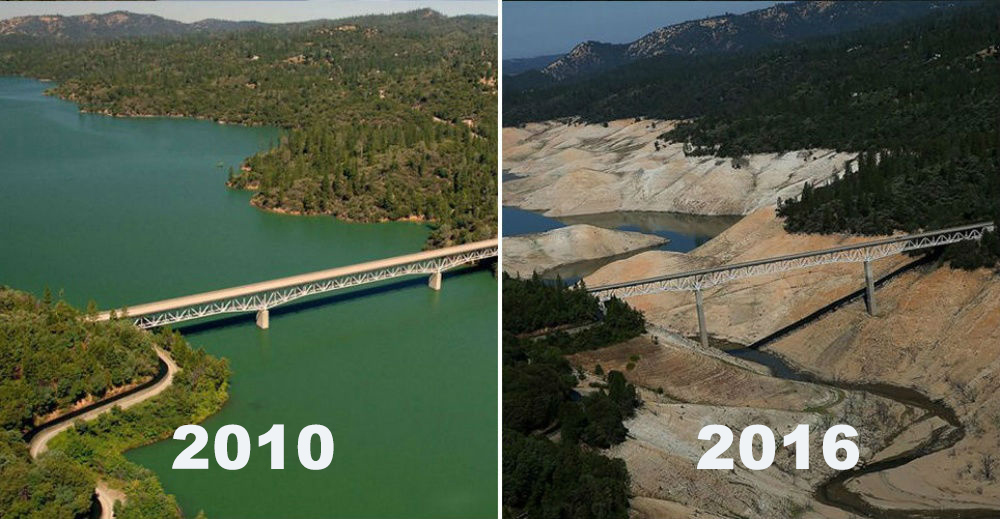How humans have changed the world’s landscape in the past 100 years / Con người đã thay đổi cảnh quan thế giới như thế nào trong 100 năm qua

The 20th century saw some of the most profound changes in human history. The world has gone through some of the most important events, which were largely manipulated by rapid advancements in technology. This technology brought economic growth, advances in health care, facilitated global communication, but it brought World Wars I and II, previously unknown diseases, extinction. animal species and global warming. Advances are accelerating in the 21st century, but they are facing calls for consciousness and scientific efforts to save the planet.
Thế kỷ 20 đã chứng kiến một số những thay đổi sâu sắc nhất trong lịch sử nhân loại. Thế giới đã trải qua một số sự kiện quan trọng nhất, mà chủ yếu bị thao túng bởi những tiến bộ nhanh chóng trong công nghệ. Công nghệ này mang lại tăng trưởng kinh tế, tiến bộ trong chăm sóc sức khoẻ, tạo điều kiện cho truyền thông toàn cầu, nhưng nó đã mang lại cho Thế chiến I và II, các loại bệnh chưa từng được biết đến, sự tuyệt chủng các loài động vật và sự nóng lên toàn cầu. Những sự tiến bộ đang gia tăng nhanh hơn trong thế kỷ 21, nhưng chúng đang phải đối mặt với những lời kêu gọi ý thức và những nỗ lực khoa học để cứu vãn hành tinh.
Tính bền vững và Thiết kế sinh thái đang trở thành xu hướng thiết kế bây giờ. Tuy nhiên, hành tinh này vẫn có thể được cứu? Hoặc liệu có bất cứ nguy hiểm nào bắt đầu? Bây giờ, hãy kiểm tra những bức ảnh NASA này, cho biết cảnh quan của thế giới đã thay đổi như thế nào trong 100 năm qua và bạn hãy là thẩm phán cho chính thế giới của mình.
Muir Glacier, Alaska. August, 1941 — August, 2004 – Image via: brightside.me
Aral Sea, Central Asia. August, 2000 — August, 2014 – Image via: brightside.me
Carroll Glacier, Alaska. August, 1906 — September, 2003. – Image via: brightside.me
Mar Chiquita Lake, Argentina. July, 1998. — September, 2011 – Image via: brightside.me
Uruguay Forests, March, 1975 — February, 2009. Uruguay has managed to grow its forested area from
45,000 hectares to 900,000 hectares. However, this has had the effect of a loss of plant and animal diversity
– Image via: brightside.me
Forests in Rondonia, Brazil. June, 1975 — August, 2009 – Image via: brightside.me
McCarty Glacier, Alaska. July, 1909 — August, 2004 – Image via: brightside.me
Mabira Forest, Uganda. November, 2001 — January, 2006 – Image via: brightside.me
Great Man-Made River, Libya, April, 1987 — April, 2010. This is the greatest engineering project
in the world: a network of pipes, aqueducts and wells more than 500 metres deep. The water
system provides the desert area with water – Image via: brightside.me
Toboggan Glacier, Alaska. June, 1909 — September, 2000 – Image via: brightside.me
Bear Glacier, Alaska. July, 1909 — August, 2005 – Image via: brightside.me
Matterhorn Mountain in the Alps, on the border between Switzerland and Italy. August, 1960
— August, 2005 – Image via: brightside.me
Pedersen Glacier, Alaska. Summer, 1917 — summer, 2005 – Image via: brightside.me
The Dasht River, Pakistan, August, 1999 — June, 2011. The Mirani Dam supplies clean drinking water
and power to the surrounding area. The dam also helps support local agriculture – Image via: brightside.me
Powell Lake, Arizona and Utah. March, 1999 — May, 2014 – Image via: brightside.me
Lake Oroville, California. July, 2010 — August, 2016 – Image via: brightside.me
By EGO Landscape
(Theo Arch20)





























